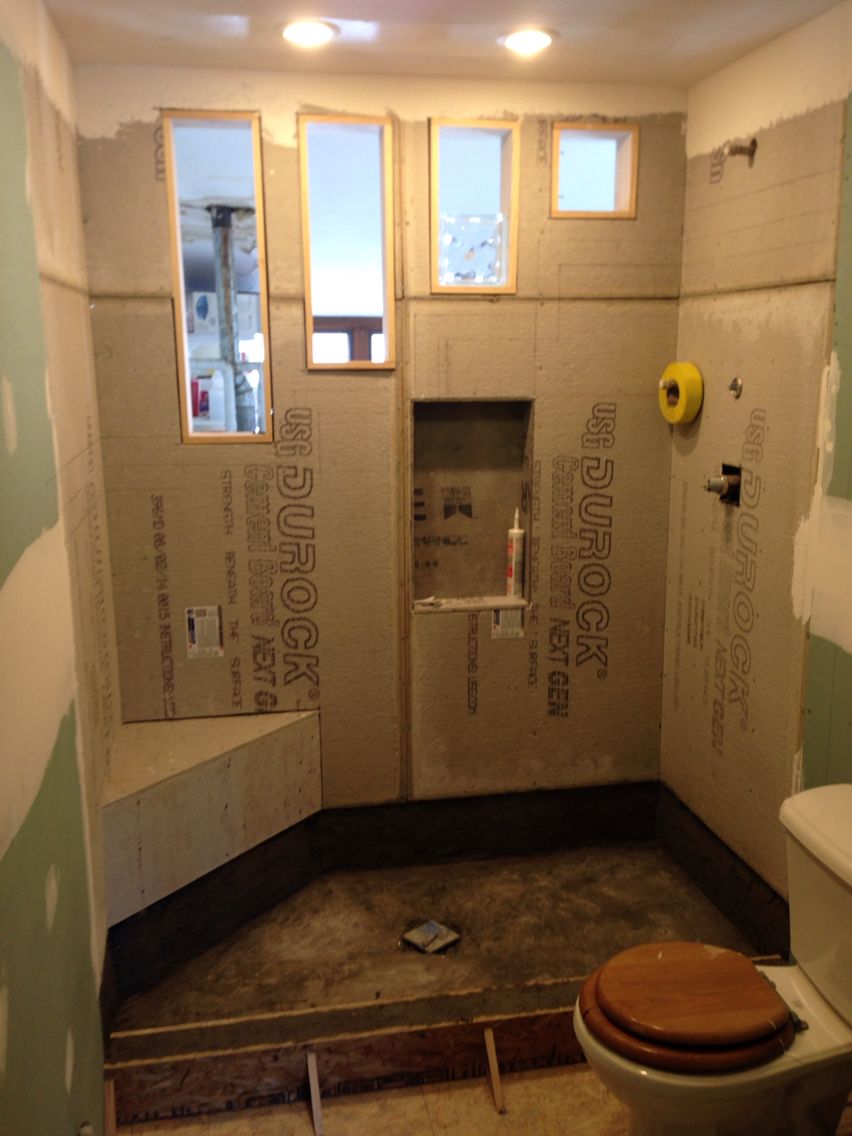Moisture resistant drywall is best suited for areas such as untiled bathrooms and basements where there might be damp conditions and humidity with minimal splashes of water.
Bathroom floor sheetrock.
Even a tiny amount of water introduced through a crack or hole in the tile will expand once it hits the moisture hungry paper facing and gypsum core of the drywall.
In this case all below floor drain lines need to be installed first.
Drywall installers use the floor as a guide to locate studs and electrical boxes.
2 separate sinks built next to each other also have to have a spacing of 4 inches or more.
Different rooms in your house therefore have specific drywall requirements for example the drywall that you will hang in your bathroom must be able to resist moisture and water and the most common type used is the green board.
Because paper is an organic product it will quickly become moldy.
This type of waterproof drywall is designed for wet areas such as showers and bathtub surrounds.
Gypsum board is not the best choice of material for bathroom walls however.
Standard sheets of drywall are made from a core of gypsum sandwiched between layers of paper.
It takes just a little moisture for drywall s paper facing to disintegrate and turn moldy.
All bathroom sinks should be 4 inches from the side walls at minimum and should also have at least 21 inches of front clearance.
If the floor to this new bathroom is constructed with wood floors joists and a wood sub floor the walls should be constructed before plumbing drain lines are installed.
It is 13 pounds lighter than other varieties for the same size and thickness.
This type of wallboard is the most common material used on walls in home construction.
Drywalls are normally installed in high water rooms such as the kitchens and bathrooms.
The green board drywall the one contractor mentioned is just like regular drywall except that the multilayered facing paper on the front and back has been treated to resist moisture.
The opposite is true if the bathroom will be located on a concrete floor.
When installing drywall should it rest on the floor.
The thickest of all the types of drywall 5 8 inch drywall is often fire resistant drywall.
First time remodelers often make the mistake of letting drywall rest on the floor while attaching it to the vertical wall studs with screws.
This is the most common choice for interior walls because they are easy to carry and hang.
The 4 inch rule also applies to the spacing between the sink and the.
Look into cement board if you need waterproof drywall.










